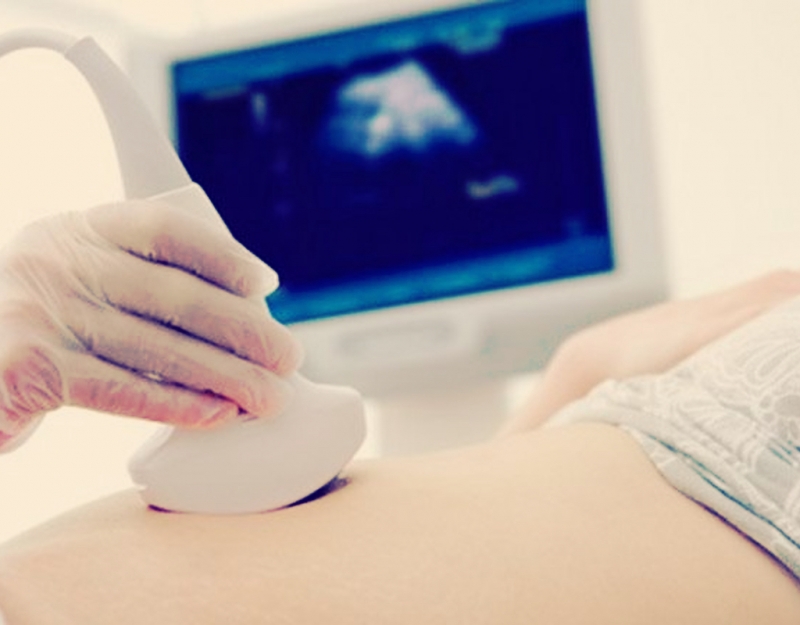In most pregnancies, the placenta implants high in the top of the uterus (called the upper segment or ‘fundus’). Occasionally, (in 0.5% of pregnancies) part of the placenta (or all of it) will implant in the lower segment of the uterus. The lower segment is the part of the uterus that absorbs the cervix as it dilates during labour.
This is known as placenta previa, meaning ‘placenta first’ and depending on the severity (or ‘grading’), the placenta can be situated close to, or actually cover the cervix. More severe cases of placenta previa are prone to bleed heavily during labour, and if the placenta fully covers the cervix, will prevent the baby from being able to be born. Placenta previa is covered in more depth in bleeding during late pregnancy.
Most placenta previa’s are known to be present before the labour begins, because the woman has experienced some bright, painless, bleeding in the last 3 months of her pregnancy. This bleeding is normally investigated with an ultrasound, showing the placenta to be low. In this case, the woman and her caregiver are well aware that heavy bleeding could be a problem if planning a vaginal birth.
Occasionally, you may not be aware that you have placenta previa before the labour, especially if the baby is premature, have not experienced any bleeding late in the pregnancy. In this case, your caregiver will suspect it if you start to bleed more heavily than normal during labour.
How is it managed?
If you are aware that you have placenta previa, or you start to bleed more heavily than normal in labour, your caregiver would monitor any bleeding closely.
Other interventions can include:
Monitoring the baby
The baby’s heart rate would be continuously monitored with a CTG machine, aimed at detecting if the blood being lost by the woman is affecting her baby. Blood loss from the placenta can affect the blood flow to the baby, and the transport of oxygen and nutrients to them. If severe, it can cause fetal distress, and be life threatening for the baby. If this were the case, a Caesarean would need to be performed.
Monitoring the woman
The woman’s pulse and blood pressure would be monitored more closely, possibly every half an hour, instead of every 2 hours. An intravenous (IV) cannula would be placed in her arm, which can be used to attach to a drip if the bleeding became heavy. This is used to give fluids through the vein, or in severe cases a blood transfusion. It can also be used if there is a need to go the operating theatre for an emergency Caesarean.
Ultrasound
A portable ultrasound may be brought into the labour room to investigate any heavy bleeding, if you are not aware that you have placenta previa. This will give your caregiver information about why you may be bleeding, if it is wise for you to continue labouring, and to let the doctor know where the placenta is actually lying, before a Caesarean is performed.
It can inform the surgeon about the best place to make the Caesarean incision, helping avoid cutting into the placenta during the operation. This risks blood loss from the baby, as well as the woman, but in some cases may be unavoidable, depending on where the placenta actually is.
An internal vaginal examination
An internal vaginal examination in the operating theatre.
This would be done to see just how far away the edge of the placenta was (if it is not actually covering the cervix). The doctor would place their fingers inside the woman’s cervix and gently feel up inside the uterus, until they came to feel the edge of the placenta. If they felt it was far enough out of the way a vaginal birth may be possible.
An internal vaginal examination can occasionally trigger heavier bleeding that, if severe enough, would mean an emergency Caesarean. That is why the procedure is normally carried out in the operating theatre, so that the operation can be performed quite quickly, if needed.
Epidural?
There is debate about the most appropriate anaesthetic to be used for women with placenta previa. An epidural anaesthetic may contribute to lowering the woman’s blood pressure, so does the heavy bleeding, possibly making the blood pressure too low. On the other hand a general anaesthetic holds increased risks, so the pros and cons would need to be weighed up.
The baby
The baby may need to go to the intensive care nursery after the birth. This will depend on how distressed the baby was, and if the baby lost any blood, or needed extensive resuscitation at birth.
Further bleeding
Heavy bleeding due to a placenta previa can also mean the woman is at higher risk of bleeding further, due to the effects of the placenta being situated low in the uterus. These can include a heavier blood loss during a Caesarean operation, because the doctor has to ‘cut through’ the low-lying placenta to deliver the baby. The lower segment of the uterus is also less able to contract as efficiently (as compared the upper segment) to control the bleeding after the placenta is delivered.







Leave A Comment
You must be logged in to post a comment.